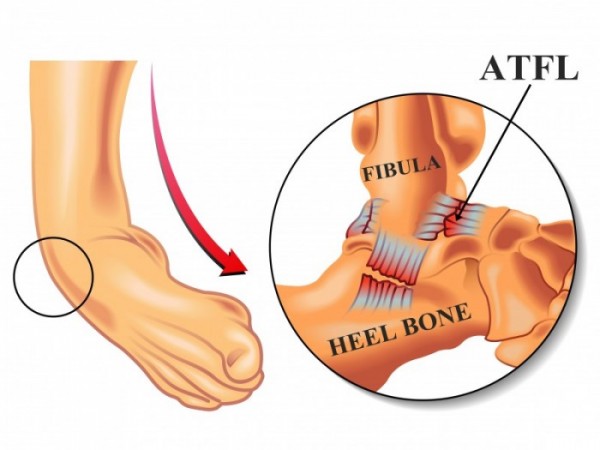Rory McIlroy recently sustained a lateral (outer aspect of ankle) sprain while playing soccer with friends. Unfortunately for Rory, this will keep him out of this year’s British Open Championship. According to media reports, he sustained a ruptured ATFL and a tear of his joint capsule. So, how does such an injury occur, what is an “ATFL” , how is it diagnosed and what would physiotherapy rehabilitation typically involve? Read on…….
Mechanism of Injury
Lateral ankle sprains commonly occur in sports such as football, hurling, soccer, basketball, tennis and gymnastics. These injuries can occur when the athlete is twisting or lands awkwardly. The typical mechanism of injury is where the ankle is rolled so that the sole of the foot points inwards. In this position the ligaments on the outside of the ankle becomed stretched. Depending on the force of the injury, different ligaments can get over stretched and result in a ligament sprain/tear. Different grades of ligament sprain exist and range from a grade 1 to a grade 3. A grade 1 injury is a mild ligament tear, a grade 2 is a moderate ligament tear, and a grade 3 is a severe (ruptured) ligament tear.
Anatomy
“ATFL” stands for anterior talofibular ligament. This ligament runs from a bone in the outer aspect of the lower leg called the “fibula” to a bone in the foot known as the “talus” and offers stability to the ankle joint. The joint capsule is a leathery type substance that offers further stability to the ankle joint. According to twitter reports, it is these two structures that Rory has injured – a complete rupture of his ATFL (grade 3) and a tear of his joint capsule.
Diagnosis
In the event of an ankle injury a chartered physiotherapist will complete a thorough assessment to determine the extent of the injury and which structures are involved. Gait, ability to weightbear, range of motion, swelling, bruising, propriocetion, and tenderness on palpation will form part of the assessment. In severe lateral ankle sprains the patient may also have suffered a fracture. If the Physiotherapist suspects a fracture an x-ray will be advised. Most lateral ankle sprains do not require an MRI scan. In severe lateral ankle sprains an MRI scan may be requested to determine the extent of the injury. If after 4-6 weeks progress is slower than expected, then an MRI scan may be requested to determine associated injuries.
Rehabilitation (this is a general overview and not prescriptive, optimum management is based on individual assessment.)
Stage 1 (0 – 72 hours) – The main aim of stage 1 is to reduce inflammation and pain. This is achieved by:
• RICE – rest, ice, compression, and elevation
• Anti-inflammatories – gel or tablets
• Crutches – if the patient is unable to weight bear with a good gait pattern
• Camboot – in severe cases to immobilise the ankle and reduce inflammation
Stage 2 (72 hours – 2 weeks) – The main aim of stage 2 is to regain range of motion and achieve a normal gait pattern
• Massage to reduce muscle tightness
• Manual therapy to reduce joint stiffness
• Exercises to improve range of motion and proprioception
• Increase weight bearing on the injured leg
Stage 3 (2 – 6 weeks) – The aim of this stage is to regain proprioception and strength
• Strengthening exercises
• Progression of exercises to improve proprioception
• Gradual return to activity
Stage 4 – The main aim of this stage is to return to sport and prevent recurrence in the future
• Sport specific exercises to regain full strength, proprioception, and coordination
• Running program
• Agility program


